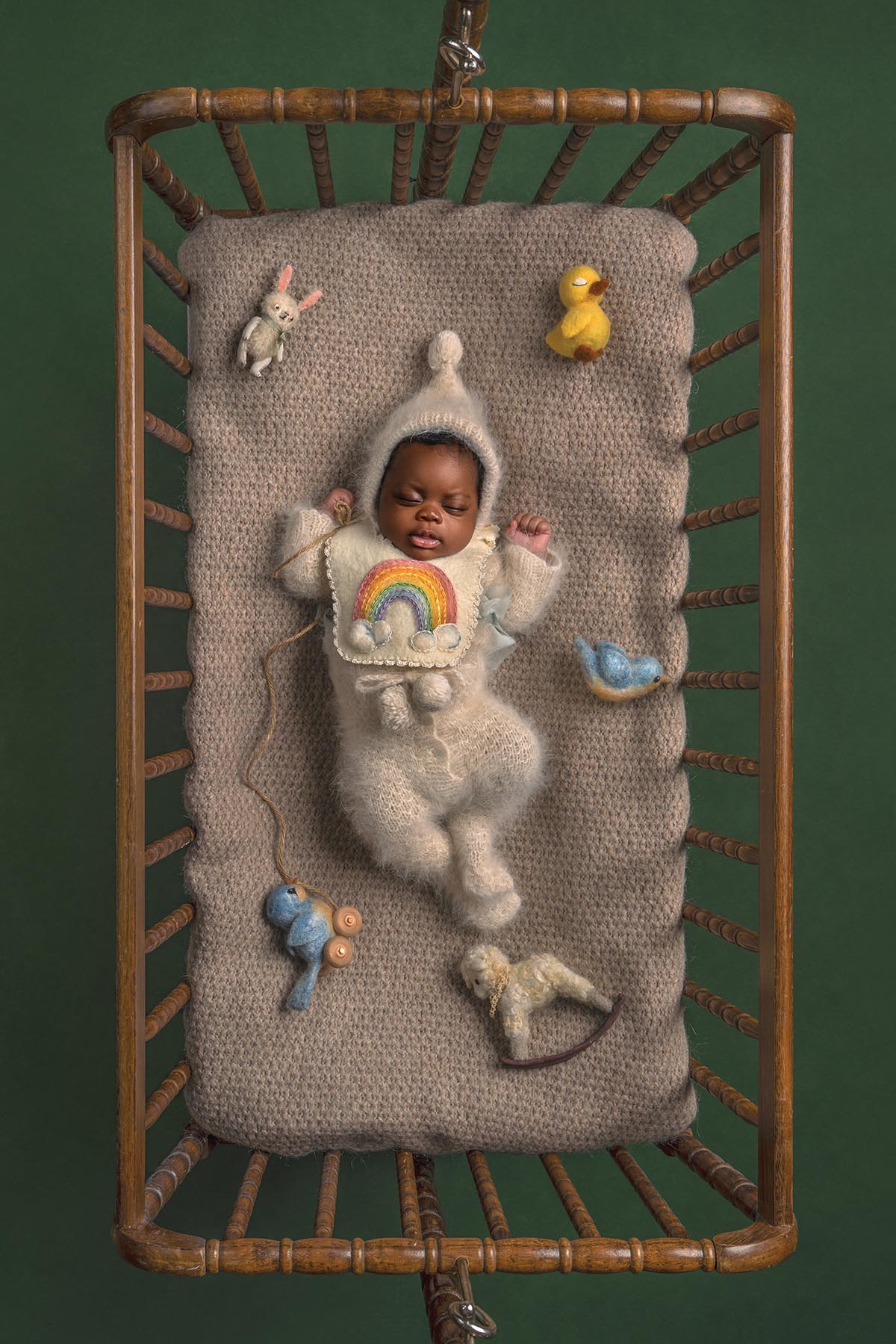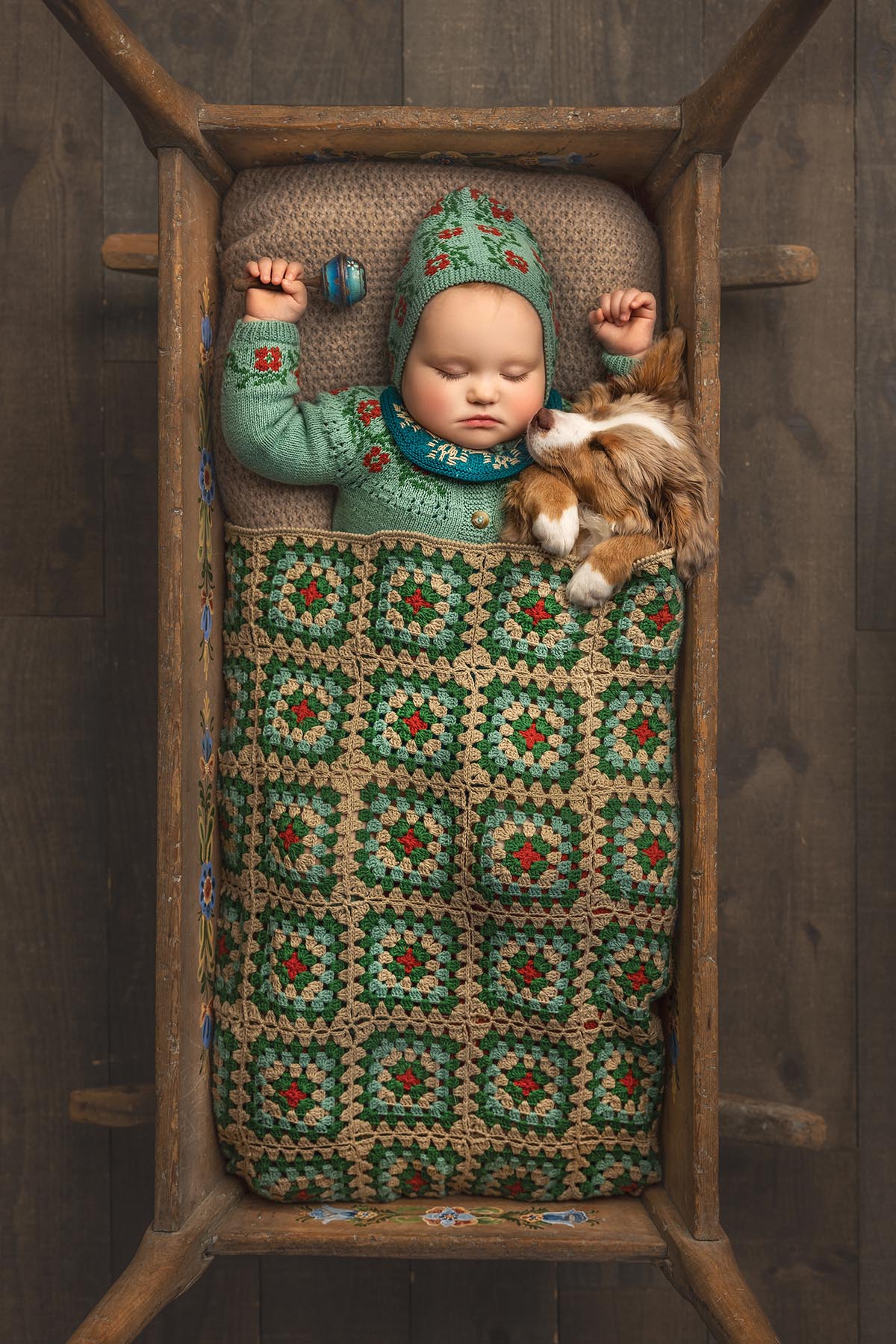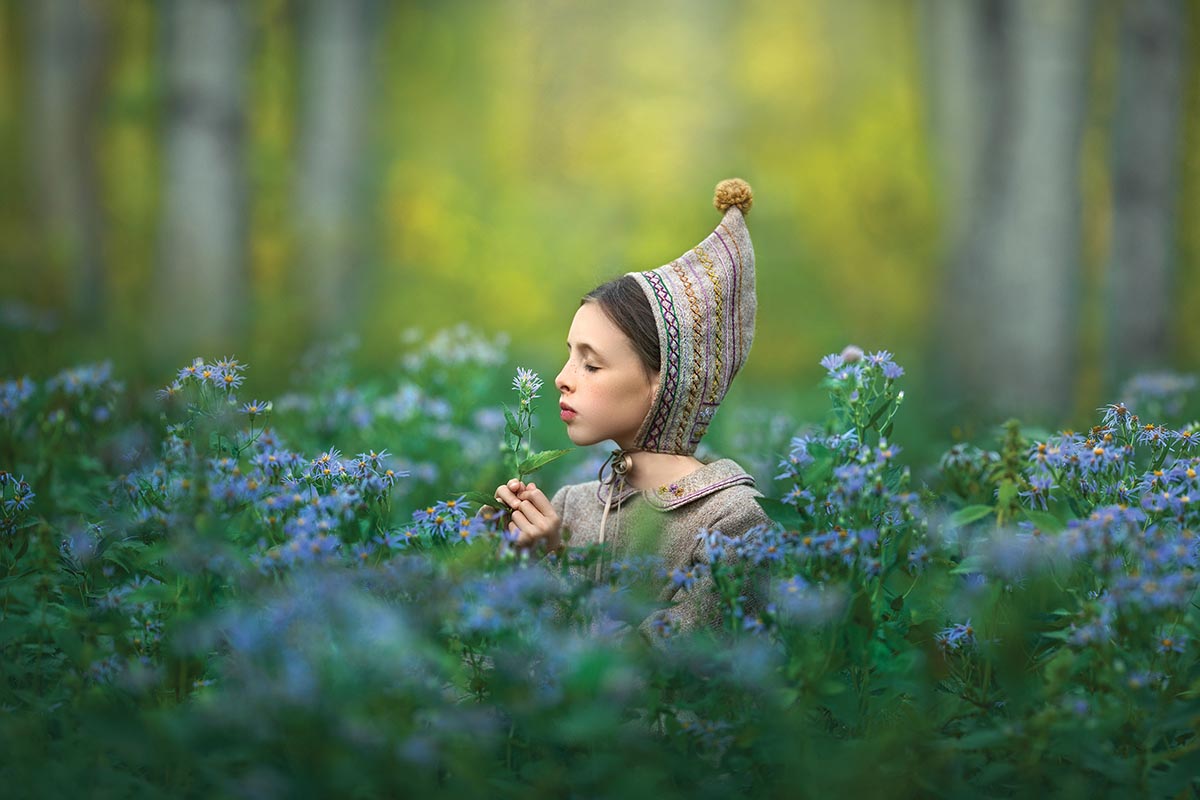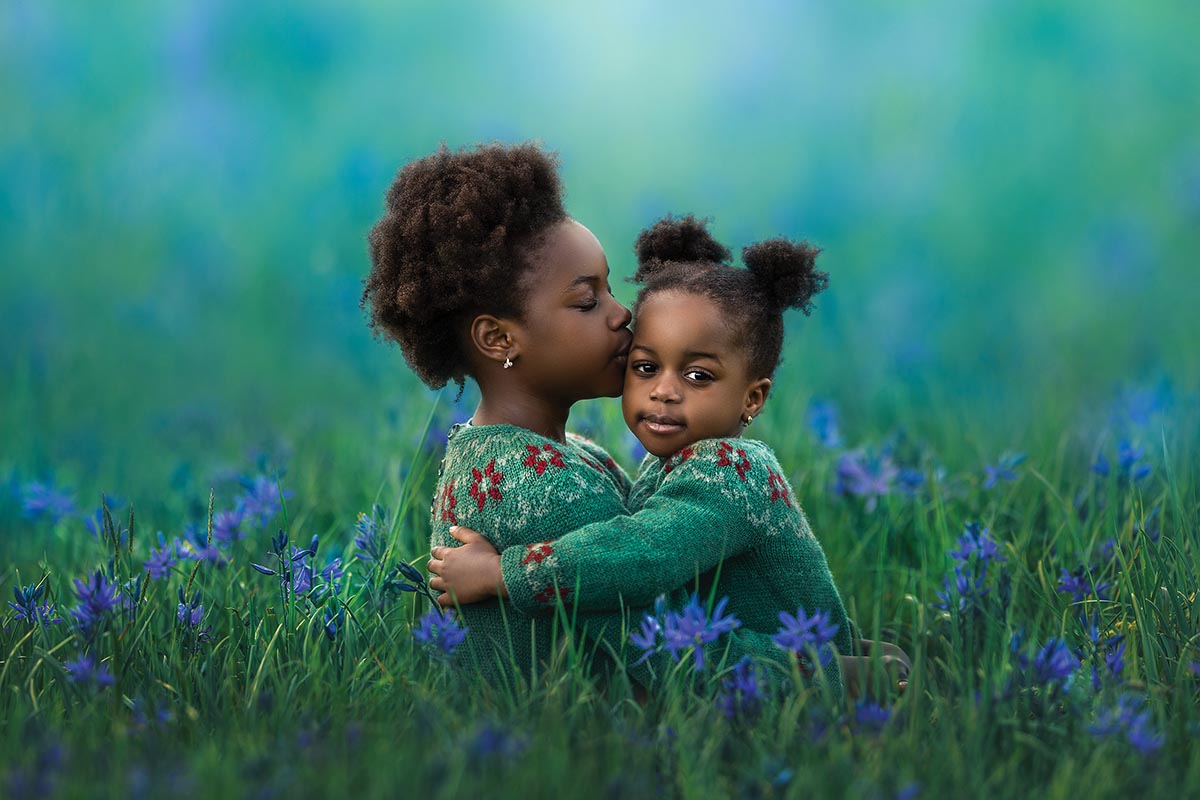It’s not uncommon for photographers to send out dozens of proofs following a baby or child portrait session. But for Cassandra Jones of Noelle Mirabella Photography in Grande Prairie, Alberta, the number is much lower: four to 10 images per client. Each of those images is the result of a planned, detailed concept she and the client agree on before the session. The client commits to and pays for a print of each concept before the session has even been completed.
It’s a unique way of doing business but one that’s necessary. “It takes me so long to put these sessions together,” Jones says. “There’s an incredible amount of planning that goes into every single session.” When a client books with her, she conducts a pre-session interview—either by phone or in person—to get to know the client and determine how best to serve them. She wants to know their story, how she might incorporate meaning or symbolism into their photos, how they’d like the photos to be structured, and how they’d like their loved ones to be seen and remembered. The client agrees to a specific number of images—between four and 10—and then Jones develops the concepts. “We leave room for magic,” she says, but for the most part, it’s a detailed scheme that she OKs with the client pre-session so there are no surprises.
The process requires “a huge level of commitment for both me and my clients,” says Jones. She can’t risk taking on clients who may not follow through with a purchase. That’s why she requires the minimum order commitment of an 8x12-inch print of each concept she creates. Most clients go bigger once they see the work, she notes, purchasing at least one piece of wall art for their family. Some clients purchase wall art for each image she creates.


LOOKING FOR BEAUTY
Jones came into photography after the heart-wrenching loss of her first daughter. At the time, she was working toward a master’s degree in clinical psychology. “I didn’t even think I had any artist in me,” she says. “I was more of a scientist and researcher.” But sorrow overwhelmed her, and she elected to take a leave of absence from her studies. That’s when she bought her first DSLR. “I just challenged myself to get out into the world and look for beauty every single day and capture it, and it became my therapy,” she says. “I never wanted to leave therapy, so here I am.”
In retrospect, Jones sees that her style was established from the first moment she picked up a camera. “I am more skilled now, I have more tools now, and I have refined the process, but when you look back at my earliest work that I ever created, I was doing a lot of the same things I am doing now,” she says. “I grew up off the grid on a farm out in the middle of nowhere, and my mom used to sew our pajamas and we had little knit pixie suits and little smock dresses, and so much of my work is just being inspired by the environment that I was raised in—in this beautiful, absolutely stunning farm, remote, in the middle of nowhere, where there were no distractions and we lived off the land. … When I had my own babies, I tried to curate a world for them that pulled the best parts of my childhood together and the things that were the most nostalgic to me and that just naturally filtered into my work, and that is how I have the style that I have.”
She thinks the cohesiveness of her style is in part thanks to doing all her own editing from scratch. “I don’t use presets or actions, and this helps to give me a lot of control over how I want my final images to look.” Wardrobe is essential to her style and is included with the sessions, which usually incorporate a couple of wardrobe changes. “Most of my wardrobe is custom made,” she says. “A lot of it comes from the Miou knit shop.” She’s also begun doing her own embroidery work on dresses as well as experimenting with felting.

Color, another essential to Jones’ photography, is one way she connects her wardrobe choices with the natural surroundings of portrait locations. “I’m pretty obsessed with color,” she says, and admits that color theory came naturally to her without study. For those who struggle with it, she suggests learning about color theory through adobecolor.com, which has excellent tools that enable you to pair colors to see what they look like together. She uses complementary colors, split complementary colors, mono-chromatic colors, repeating colors. “I use colors in every combination you can possibly think of. I don’t limit myself. But everything is planned out in advance and it’s very, very thoughtfully planned out,” she notes. The colors of the wardrobe must coordinate perfectly with the colors of the natural environment.
Though Jones has a number of tried-and-true locations she returns to time and time again, she consistently challenges herself to find new session locations. “I location scout as a daily habit,” she says, “almost every single day in the spring, summer, and fall.” It’s part of her lifestyle to take walks on nature trails and picnic in the park, always keeping her eyes peeled for new locations and assessing known locations to see whether they are looking particularly pretty or a bit barren. That one beautiful tree in that one beautiful scene that was perfect last year may be withered this year, she notes. “It is different from season to season, and it is different year to year. Everything is constantly changing and ebbing and flowing and evolving, so I really have to be on my toes and continue to look for new little nooks of magic all the time.”
Not only does she note the status of the environment but also the light and the weather and how they will affect the scene. “Not every location is magical when it’s cloudy or when it’s sunny. It depends on how the location is structured, what your tree line looks like, how much distance that you have, and what kinds of trees you are dealing with—whether they are deciduous or coniferous—or whether there are mountains in the background or hills or a flat landscape.” When scouting, she keeps notes on her phone mapping out each tree, shrub, and bush, as well as where the light is best.
MANIFESTING
Jones admits she’s not a numbers person but does have one business tip for budding photographers: Don’t put everything you earn back into the business. “When I first started out, I put everything back into the business and [in hindsight] I was really wasteful,” she says. She put all her earnings into purchasing additional wardrobe and props she didn’t need. It can be difficult not to put all your money where your passion is, she admits. “I would encourage people to pay themselves as artists and not put everything back into the business from day one. It took me a long time to learn that—like, years.”
In 2020, Jones added another source of inspiration to her business: After a 10-year search, she and her husband purchased land in the nearby countryside dotted with trees and abundant with the wildflowers of her youth. “My acreage is my little slice of heaven. I feel like I manifested that place in my mind and then fate brought the acreage to my doorstep,” she says. “It was one of those things that was absolutely meant to be. It is the place that I go to just rejuvenate and be with nature.” She’s sprinkled about 30 pounds of wildflower seeds throughout the property, she laughs, and can’t wait to see what is reaped over the years.
Eventually, she and her husband hope to build a home on the land, but for now it’s simply a place to explore—in the summer she’s there every day, she says—and to host a majority of client portrait sessions. “[Clients] drive out there with me and they are like, ‘Wow, how does this exist here?’ Because it’s so pretty. The forest is nicely spaced so light can come through and you can frolic between the trees, and it’s just magical.” It reminds Jones of the farm she grew up on as a child—of the land and the life that has always inspired her work.
Amanda Arnold is a senior editor.


 View Gallery
View Gallery


